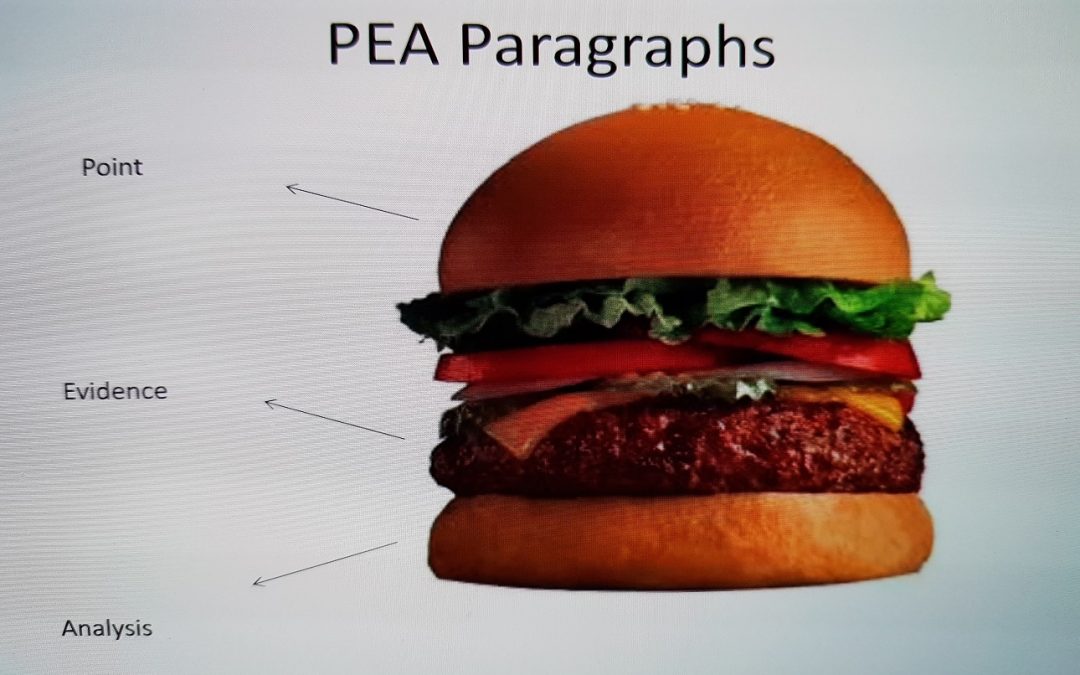P = Point – Each paragraph should begin with a clear topic sentence stating the point that paragraph seeks to make. Your point should be a claim, something that needs to be supported or illustrated with evidence. The point should be *your* idea, not an idea from another source. If you need to cite your first sentence, it is not your point.
E = Evidence – Once you state the point the paragraph intends to make, provide evidence to support that point. That evidence can take a variety of forms: examples, descriptions, quotations, paraphrases, statistics, anecdotes, etc. The amount of evidence you include will depend upon the point you make. Remember to introduce and cite any evidence you bring in from outside sources.
A = Analysis – For each piece of evidence you need to explicitly explain what you want your audience to notice about it. Help them see what you see. Fully explain a couple pieces of evidence rather than list many pieces of evidence. After you provide and explain your evidence, you need to connect it to your thesis. Explicitly show how it supports your larger claim for the paper. This is where you share your insights about the evidence you have selected.
Using the PEA paragraph structure is a good way of writing about a text. ALWAYS include textual ANALYSIS!
What is Textual Analysis?
Textual Analysis is a term used to study and understand texts. It includes exploring the languages, symbols, patterns, pictures in the text. Textual Analysis helps us understand and have a detailed idea about how people communicate their ideologies and thoughts and experiences through texts.
Please see below; a link to a YouTube video that explores the PEA paragraph structure in more detail:-
** LET ME KNOW WHAT YOU THINK? **

